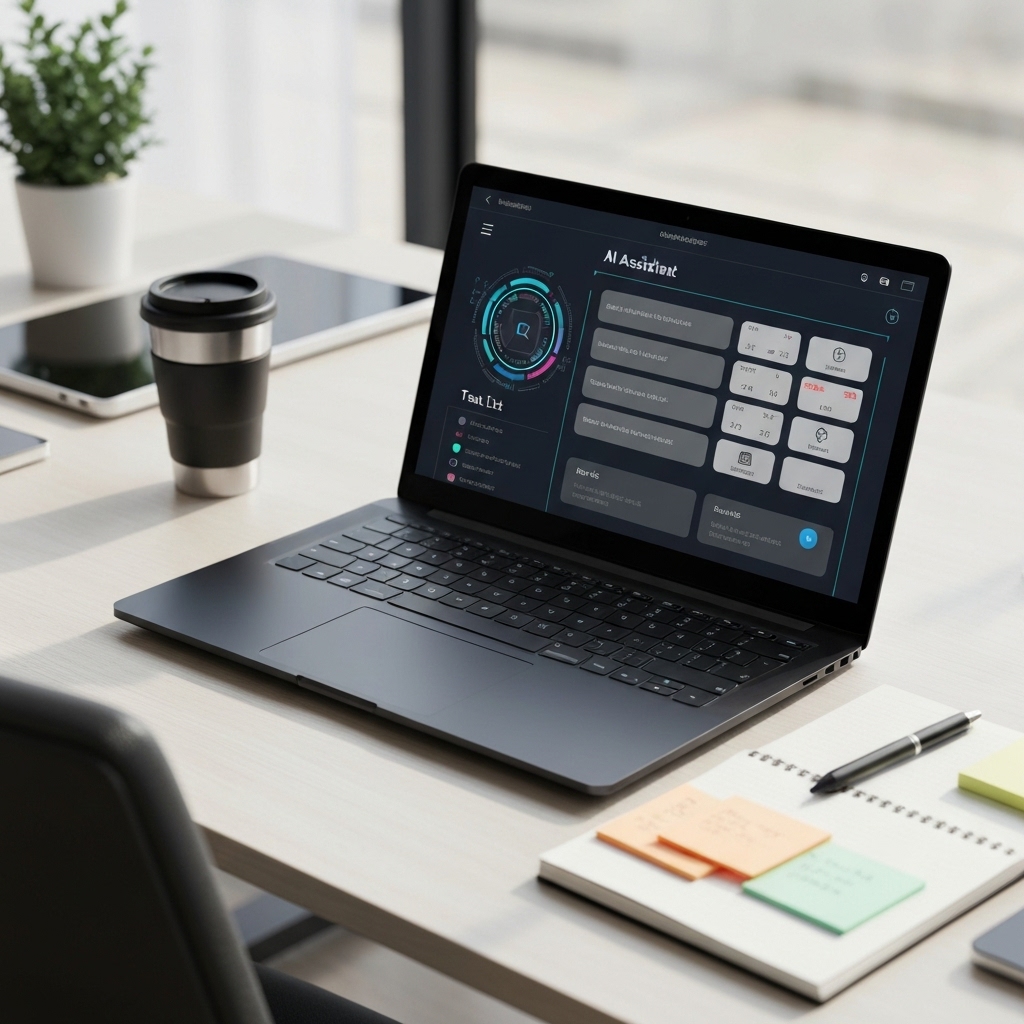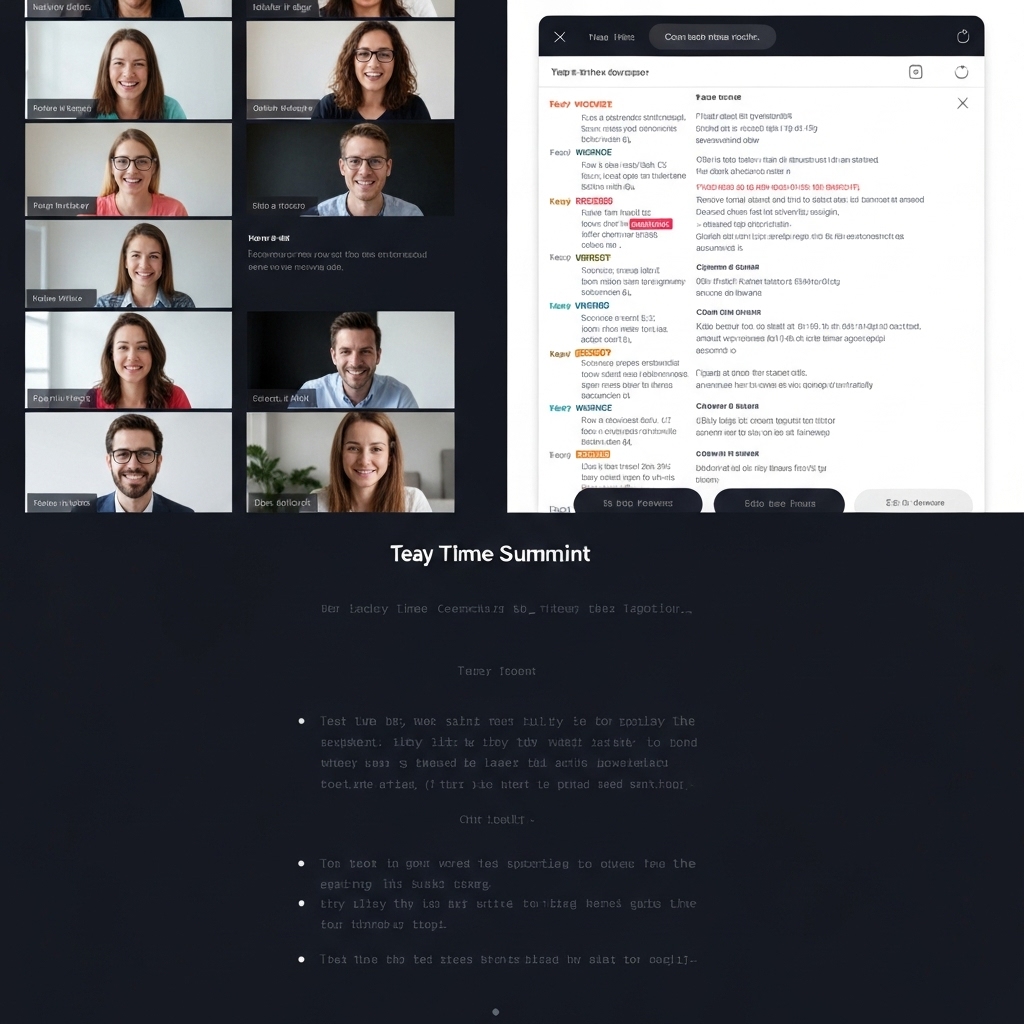AI Tools to Improve Productivity at Work: A Smart Guide for Modern Professionals
AI Tools to Improve Productivity at Work: A Smart Guide for Modern Professionals
Integrating artificial intelligence into daily workflows is no longer a luxury—it's a necessity for professionals aiming to maximize efficiency. AI-powered tools like Microsoft 365 Copilot are revolutionizing how teams handle document creation, email management, and meeting coordination by automating routine tasks and providing intelligent suggestions in real time. These capabilities free up valuable mental bandwidth, allowing workers to focus on higher-value activities that require creativity and strategic thinking.
Beyond office productivity, AI excels in data analysis and decision support, enabling faster, more accurate insights from large datasets. Platforms such as Tableau leverage machine learning to identify trends and generate predictive analytics, empowering managers to make informed choices with confidence. This shift not only accelerates planning cycles but also reduces the risk of human error, ensuring organizations remain agile in competitive markets.
Time management has also seen dramatic improvements thanks to AI-driven scheduling assistants like Clockwise, which automatically optimizes calendars to protect focus time and reduce meeting fatigue. By intelligently rearranging tasks and prioritizing deep work blocks, these tools help professionals maintain sustained concentration—a critical factor in high-performance roles.
Ultimately, embracing AI isn’t about replacing human effort; it’s about amplifying it. As the workplace evolves, those who adopt smart tools today position themselves to achieve more with less stress and greater precision. With reliable platforms backed by industry leaders, integrating AI into your workflow is a strategic step toward long-term success and personal productivity growth.
Task Automation with AI Assistants
AI-powered virtual assistants such as Microsoft Copilot, Google's Duet AI, and Notion AI are transforming the way professionals manage their workflows. By integrating seamlessly into everyday applications like email, calendars, and task management tools, these assistants automate routine activities including scheduling meetings, drafting responses, and prioritizing to-do lists. This level of automation significantly reduces the mental effort required to stay organized, enabling users to dedicate more energy to strategic and creative tasks. According to Microsoft, Copilot leverages large language models to understand context and deliver personalized assistance across platforms.
What sets these AI tools apart is their ability to learn from individual user behavior over time. As they analyze patterns in communication, scheduling preferences, and task completion, they begin to anticipate needs before explicit instructions are given. For instance, Duet AI by Google uses machine learning within Workspace apps to suggest calendar blocks based on email content, streamlining productivity. More information about its capabilities can be found on Google Workspace's official site. This proactive support not only saves time but also minimizes the risk of overlooked responsibilities.
Platforms like Notion AI take this a step further by embedding intelligent assistance directly into note-taking and project planning environments. Users can generate meeting summaries, set action items, and refine documents with simple prompts, all within a unified workspace. The result is a smoother, more intuitive planning experience that adapts to the user’s unique rhythm. As highlighted by Notion's product updates, AI integration is designed to enhance human productivity rather than replace it, emphasizing collaboration between user and tool.
By offloading repetitive cognitive tasks, AI assistants empower professionals to maintain focus on high-impact work. The cumulative effect is not just increased efficiency, but improved job satisfaction and reduced burnout. With continuous advancements in natural language processing and personalization, these tools are poised to become indispensable in modern workplaces. For deeper insights into AI’s role in productivity, authoritative sources like Harvard Business Review offer research-backed perspectives on digital transformation and workplace innovation.

Smart Email Management Tools
Modern email tools such as Superhuman and the AI-powered features in Gmail are transforming how professionals manage their inboxes. By leveraging advanced natural language processing (NLP), these platforms intelligently sort messages based on urgency and relevance, ensuring that critical emails rise to the top. This prioritization reduces the cognitive load of sifting through dozens—or even hundreds—of messages daily, allowing users to focus on what truly matters without missing key communications.
One of the most impactful features is the ability to generate context-aware reply suggestions in real time. Whether you're responding to a client inquiry or coordinating with a colleague, AI analyzes the content of incoming messages and proposes concise, appropriate responses. This not only slashes response times but also maintains professionalism and clarity across correspondence. According to research by Google AI, such smart reply systems can improve user efficiency by up to 30%, making them indispensable in fast-paced work environments.
Beyond replies, these tools optimize communication timing by analyzing recipient behavior and recommending the best moments to send an email. For instance, Superhuman’s “Send Later” function uses data-driven insights to schedule delivery when the recipient is most likely to open and respond. This subtle yet powerful feature increases engagement and helps maintain momentum in ongoing conversations.
By minimizing inbox clutter and automating routine tasks, AI-enhanced email platforms empower users to reclaim valuable time and mental energy. The result is a more streamlined, responsive, and effective communication workflow—essential for productivity in today’s digital-first world.
AI-Powered Note-Taking and Documentation
Modern meeting productivity has been revolutionized by AI-powered transcription tools like Otter.ai and Fireflies.ai. These applications seamlessly join virtual meetings on platforms such as Zoom, automatically capturing every word spoken in real time. By providing accurate, searchable transcripts, they eliminate the risk of miscommunication and ensure that critical points are preserved for future reference. This level of documentation is especially valuable for remote or hybrid teams who may not have the benefit of in-person follow-ups.
Beyond simple transcription, these tools use natural language processing to identify key discussion topics, decisions made, and most importantly—action items. Users can quickly scan through highlighted tasks and assigned responsibilities without rewatching entire meetings. This intelligent summarization saves hours of review time and keeps team members accountable by clearly outlining next steps directly within the transcript interface.
Integration capabilities further enhance their utility, allowing transcriptions and summaries to be shared automatically in collaboration hubs like Slack or stored alongside related materials in project management tools. With just a few clicks, meeting outcomes can be transformed into follow-up emails, agendas for future discussions, or documentation for stakeholders who couldn’t attend. The result is a more efficient workflow where information flows seamlessly across platforms and team members stay aligned.
By reducing the administrative burden of note-taking and meeting follow-up, Otter.ai and Fireflies.ai empower teams to focus on what truly matters—collaboration and innovation. As organizations continue to prioritize productivity and transparency, these tools are becoming essential components of the modern digital workplace. Their ability to turn conversations into actionable insights underscores a broader shift toward AI-driven efficiency in everyday business operations.

Enhancing Creativity and Content Creation
AI writing assistants such as Grammarly, Jasper, and Copy.ai have become essential tools for professionals seeking to enhance their written communication. These platforms leverage advanced natural language processing to provide real-time grammar corrections, style improvements, and tone adjustments, ensuring that every message resonates with clarity and precision. Whether drafting a formal business report or creating engaging marketing copy, users benefit from instant feedback that helps them communicate more effectively.
Beyond basic editing, these tools offer powerful content ideation features that spark creativity and streamline the writing process. From generating blog outlines to crafting persuasive email subject lines, AI assistants reduce the cognitive load associated with blank-page syndrome. This not only accelerates drafting time but also empowers writers to maintain consistency across diverse content formats. Professionals in fields ranging from marketing to legal services are increasingly relying on these capabilities to stay competitive in fast-paced environments.
One of the most compelling advantages of AI writing tools is their ability to adapt to a user’s unique voice and audience. By analyzing context and intent, platforms like Grammarly and Jasper suggest tone refinements that align with specific goals—whether it's projecting confidence in a proposal or warmth in customer outreach. According to research by Harvard Business Review, teams using AI-driven writing support report higher levels of confidence in their communication accuracy and effectiveness.
As workplace demands continue to evolve, AI writing assistants are proving indispensable in bridging the gap between efficiency and quality. They don’t replace human creativity—they amplify it. With ongoing advancements in machine learning, these tools are becoming even more intuitive, offering deeper insights and more personalized suggestions. For professionals aiming to produce polished, impactful content at scale, integrating AI into their workflow isn't just an option—it's a strategic advantage.

Conclusion: Embracing AI for Smarter Workflows
Integrating AI tools into your daily workflow isn't about sidelining human creativity or judgment—it's about enhancing it. By offloading repetitive and time-consuming tasks like data entry, scheduling, or email sorting to intelligent systems, professionals can redirect their focus toward strategic thinking and innovation. According to McKinsey & Company, automation technologies can boost productivity by up to 40% when used effectively, freeing employees to engage in higher-value work that machines simply can't replicate.
Start by identifying the activities that consume the most time without adding significant value—these are prime candidates for AI augmentation. Whether it's using AI-powered writing assistants like Grammarly to refine communication or leveraging tools like Notion AI to streamline project planning, small changes can yield substantial gains. The key is to experiment thoughtfully with one or two solutions rather than overhauling your entire system at once, allowing for a smoother transition and measurable results.
As AI becomes more accessible, its role as a collaborative partner in the workplace continues to grow. Rather than fearing displacement, professionals should view AI as a force multiplier—an ally that enhances decision-making through data-driven insights and predictive analytics. Organizations like Forbes highlight how leaders who embrace AI responsibly are seeing improvements in both efficiency and employee satisfaction.
With the right mindset and tools, AI integration doesn’t have to be overwhelming. By starting small, measuring impact, and scaling gradually, anyone can turn artificial intelligence into their most valuable productivity partner. As technology evolves, those who learn to work alongside AI—not against it—will be best positioned to thrive in the modern workplace.
